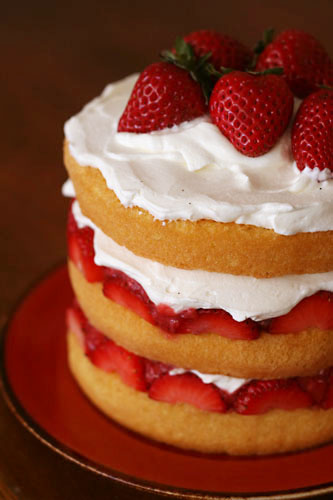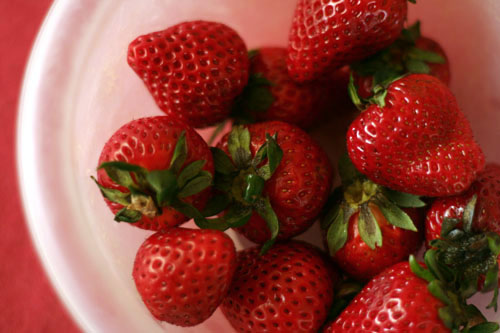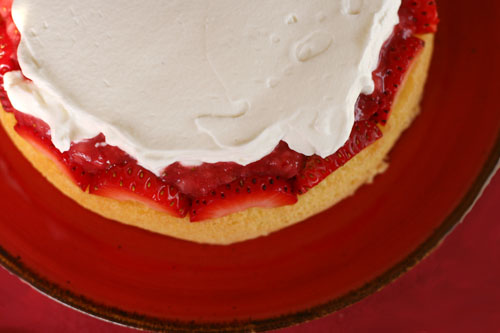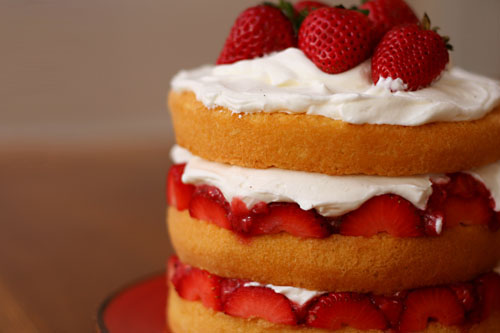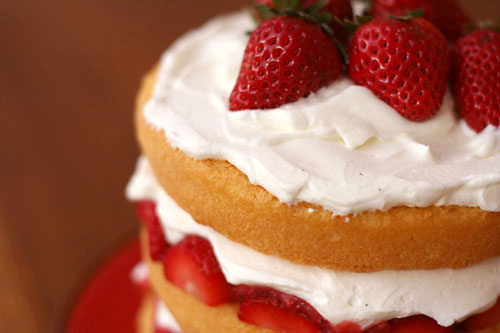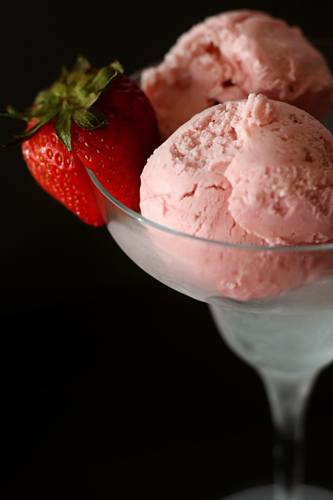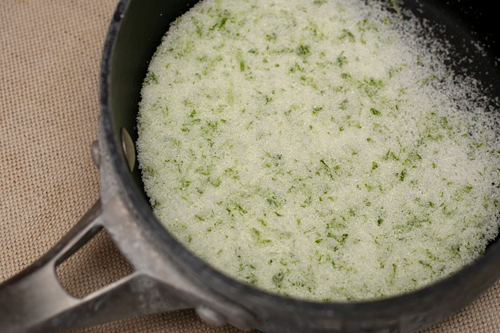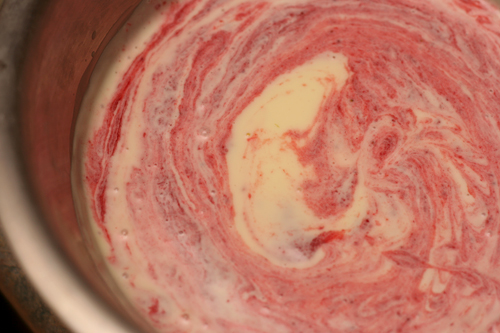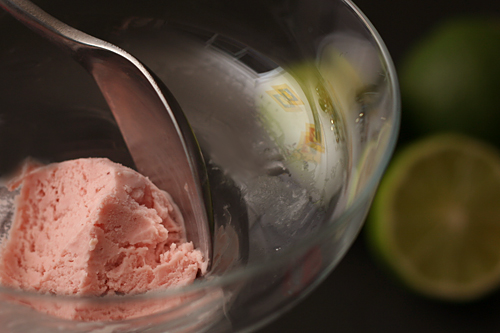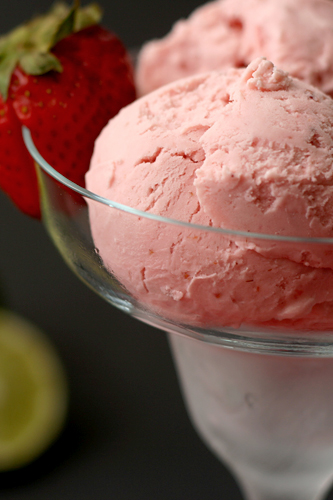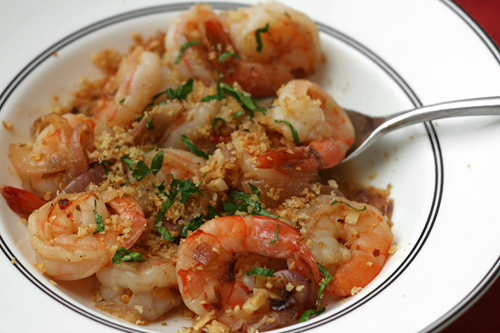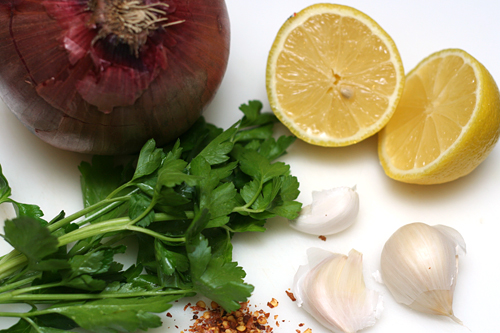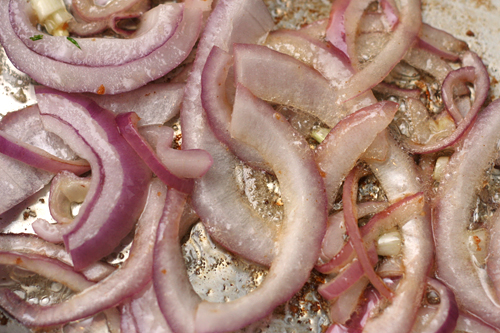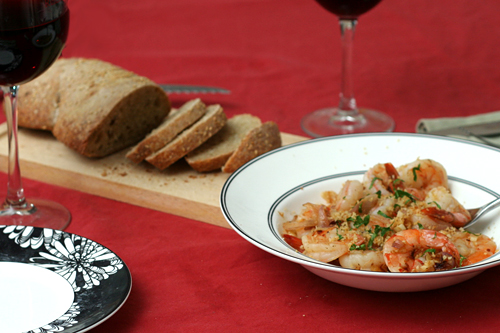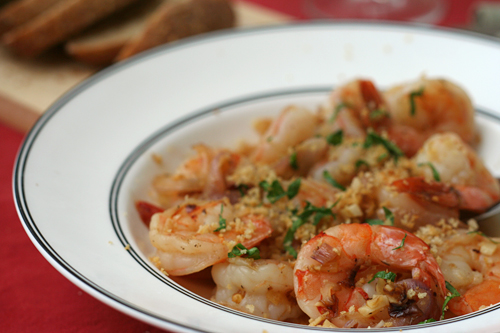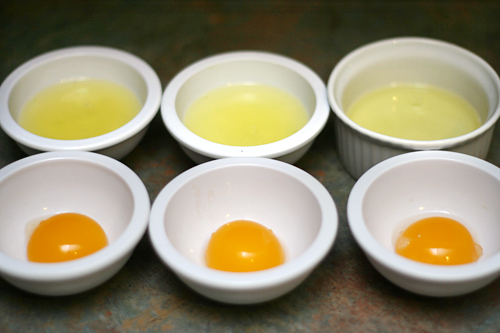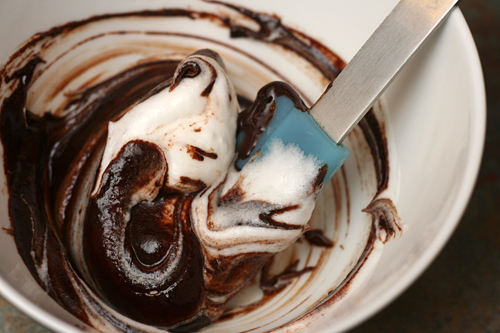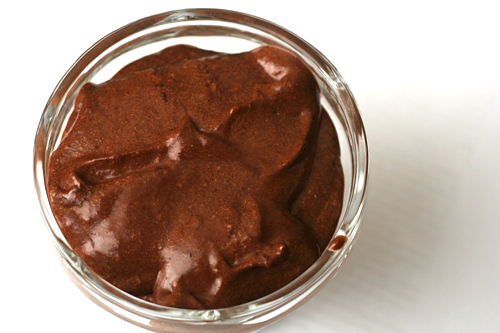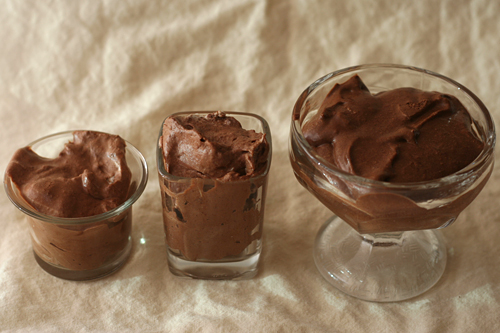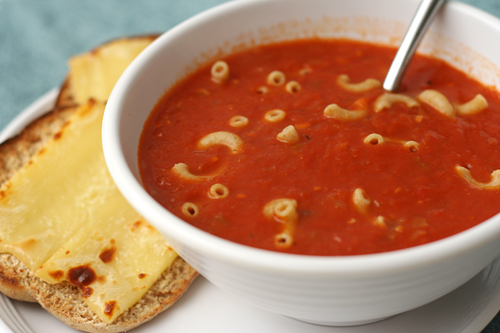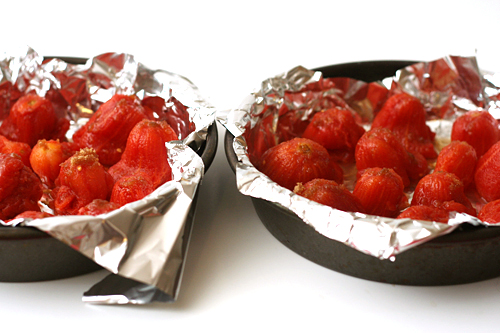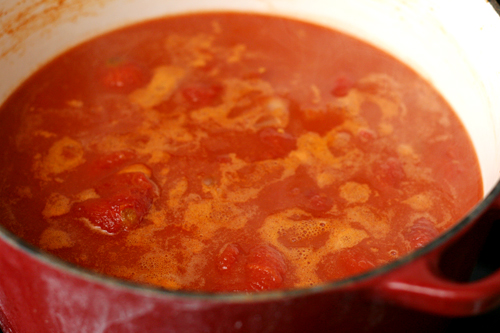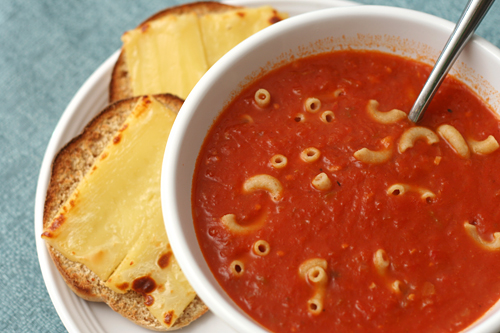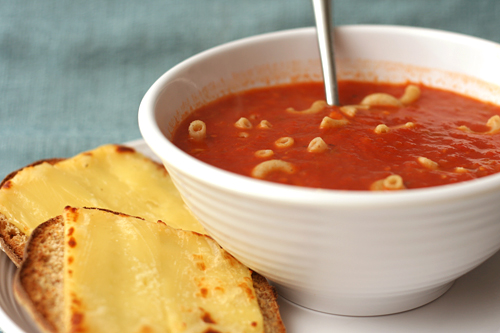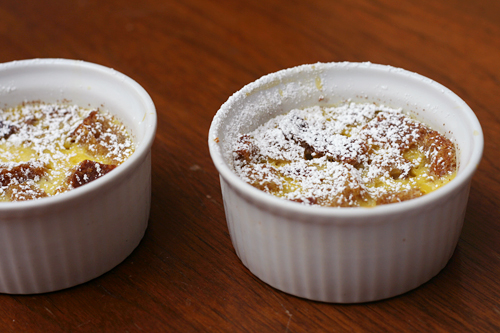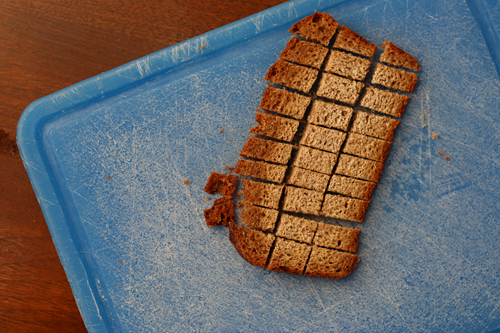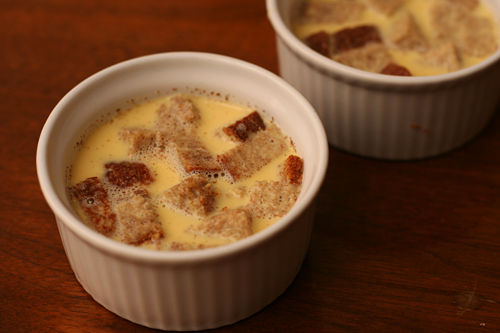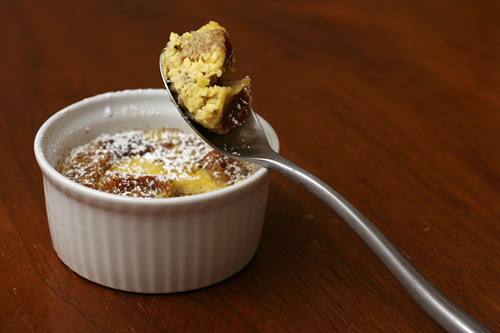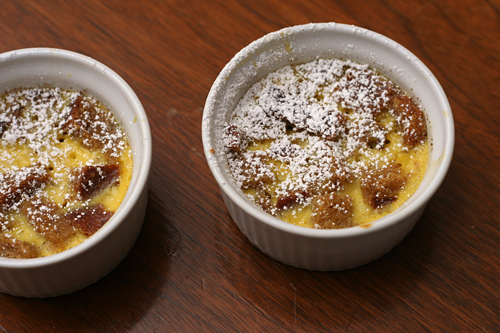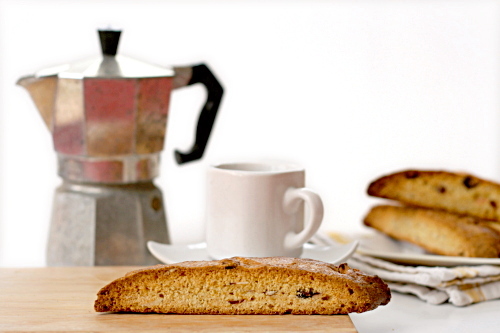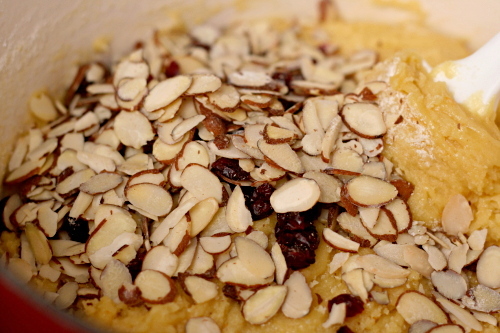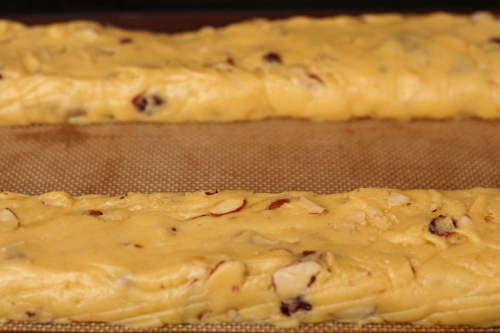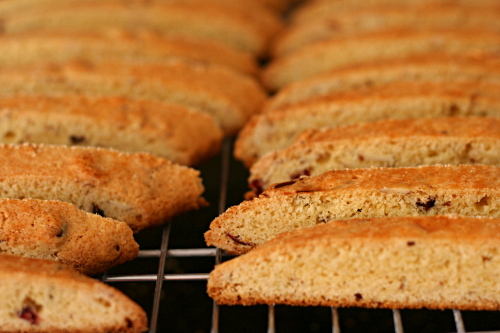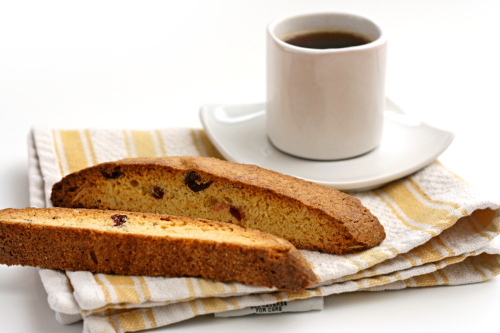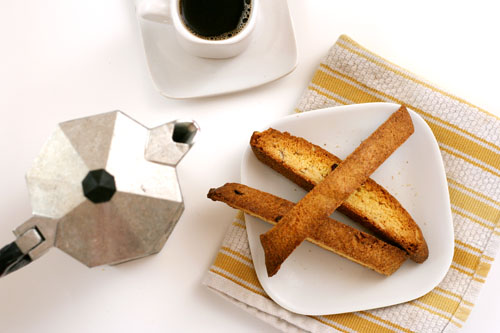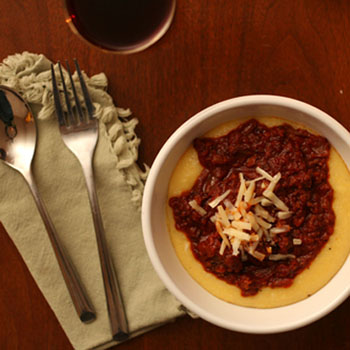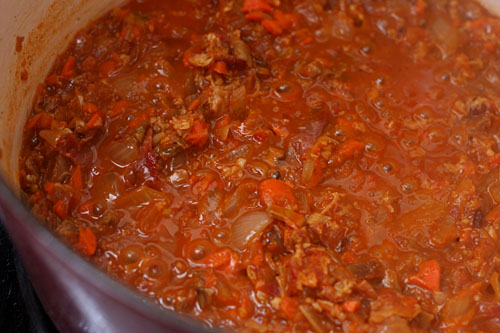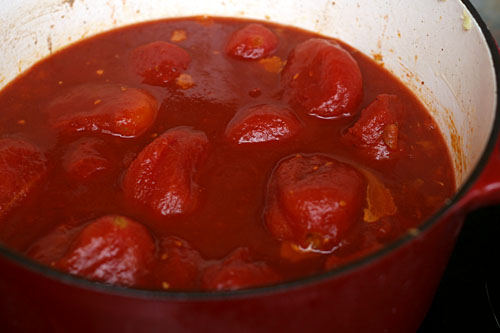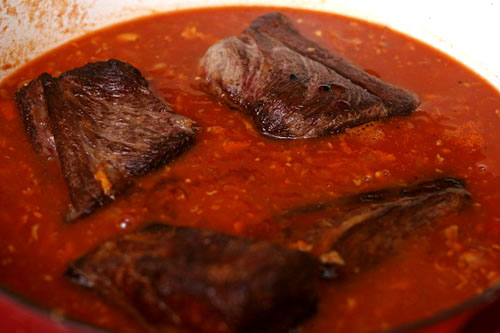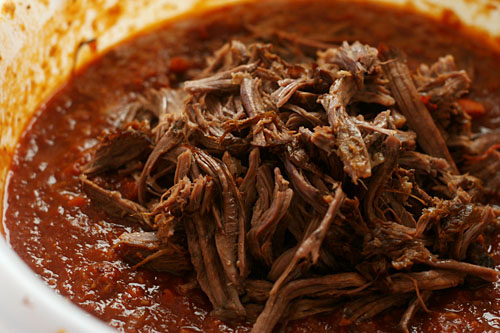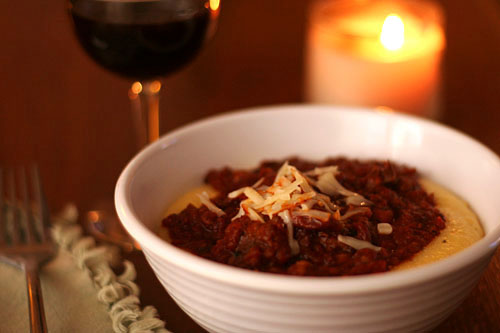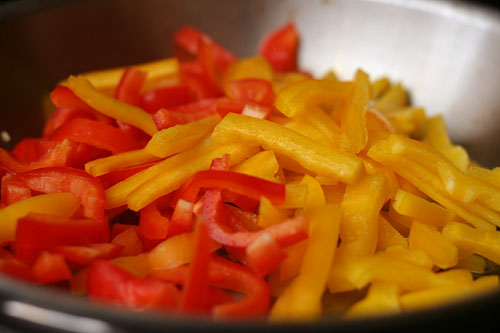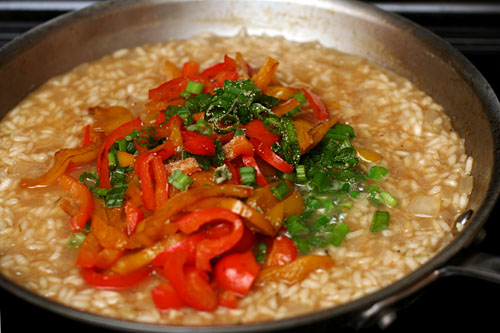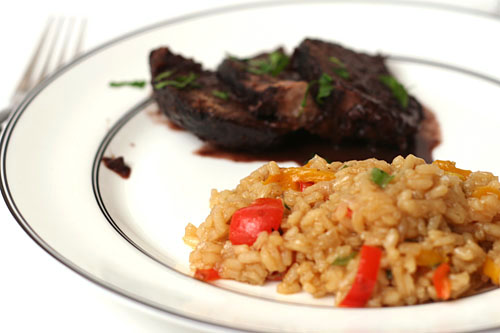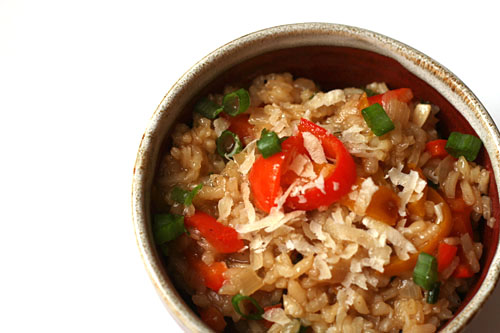Strawberries, cream cheese, and cake – is there any better combination? Strawberry shortcake is the iconic strawberries and cream dessert, and for good reason, but for me, this cake is a step above. Mostly because of the cream cheese, but I’m also partial to soft and tender cake over a craggy biscuit. And you can’t beat the wow factor of a beautiful layer cake with the innards exposed. Cake innards are my favorite.
Of course there’s a price to pay for alternating layers of sunny cake, swirled cream, and ruby strawberries, and that is in fussiness. And who doesn’t love fussiness? Not I.
Because this is a Cooks Illustrated recipe, there are a handful of tricks that make it work. The cream cheese stabilizes and thickens the whipped cream, not to mention it tastes so darn good. Half of the strawberries are halved for maximum visual impact, and the remainder is macerated to remove liquid. The extracted juice, full of strawberry flavor and not to be wasted, is cooked down to a syrup that won’t make your cake soggy.
Three parts that must be separately prepared and then alternately layered to make a tall, striped, impressive dessert. A dessert which, when sliced, will collapse into a jumble of fruit, cream, and cake that shows a remarkable resemblance to strawberry shortcake. But it was worth the trouble of all that layering, because fussing is fun, right?
One year ago: Cream Cheese Spritz
Two years ago: Strawberry Lemon Sorbet
Three years ago: Ricotta Spinach Tofu Ravioli
Printer Friendly Recipe
Strawberry Cream Cake (from Cook’s Illustrated)
12 servings
I hate splitting cakes. I baked my cake batter in three separate cake pans instead of one pan which would later need to be split.
I made a half recipe in 6-inch pans. 6-inch round pans are slightly smaller than half of a 9-inch pan, so my layers are taller than the original recipe will result in.
Cake:
1¼ cups (5 ounces) cake flour
1½ teaspoons baking powder
¼ teaspoon table salt
1 cup (7 ounces) sugar
5 large eggs (2 whole and 3 separated), room temperature
6 tablespoons unsalted butter, melted and cooled slightly
2 tablespoons water
2 teaspoons vanilla extract
Strawberry Filling:
2 pounds fresh strawberries (medium or large, about 2 quarts), washed, dried, and stemmed
4–6 tablespoons sugar
2 tablespoons Kirsch
Pinch table salt
Whipped Cream:
8 ounces cream cheese, room temperature
½ cup (3½ ounces) sugar
1 teaspoon vanilla extract
⅛ teaspoon table salt
2 cups heavy cream
1. FOR THE CAKE: Adjust an oven rack to the lower-middle position and heat the oven to 325 degrees. Grease and flour a round 9 by 2-inch cake pan or 9-inch springform pan and line with parchment paper. Whisk flour, baking powder, salt, and all but 3 tablespoons sugar in a mixing bowl. Whisk in 2 whole eggs and 3 yolks (reserving whites), butter, water, and vanilla; whisk until smooth.
2. In a clean bowl of a standing mixer fitted with the whisk attachment, beat the remaining 3 egg whites at medium-low speed until frothy, 1 to 2 minutes. With the machine running, gradually add the remaining 3 tablespoons sugar, increase the speed to medium-high, and beat until soft peaks form, 60 to 90 seconds. Stir one-third of the whites into the batter to lighten; add the remaining whites and gently fold into the batter until no white streaks remain. Pour the batter into a prepared pan and bake until a toothpick or wooden skewer inserted into the center of the cake comes out clean, 30 to 40 minutes. Cool in the pan 10 minutes, then invert the cake onto a greased wire rack; peel off and discard the parchment. Invert the cake again; cool completely, about 2 hours.
3. FOR THE STRAWBERRY FILLING: Halve 24 of the best-looking berries and reserve. Quarter the remaining berries; toss with 4 to 6 tablespoons sugar (depending on the sweetness of the berries) in a medium bowl and let sit 1 hour, stirring occasionally. Strain the juices from the berries and reserve (you should have about ½ cup). In the workbowl of a food processor fitted with the metal blade, give the macerated berries five 1-second pulses (you should have about 1½ cups). In a small saucepan over medium-high heat, simmer the reserved juices and Kirsch until the mixture is syrupy and reduced to about 3 tablespoons, 3 to 5 minutes. Pour the reduced syrup over the macerated berries, add a pinch of salt, and toss to combine. Set aside until the cake is cooled.
4. FOR THE WHIPPED CREAM: When the cake has cooled, place the cream cheese, sugar, vanilla, and salt in the bowl of a standing mixer fitted with the whisk attachment. Whisk at medium-high speed until light and fluffy, 1 to 2 minutes, scraping down the bowl with a rubber spatula as needed. Reduce the speed to low and add heavy cream in a slow, steady stream; when it’s almost fully combined, increase the speed to medium-high and beat until the mixture holds stiff peaks, 2 to 2½ minutes more, scraping the bowl as needed (you should have about 4½ cups).
5. TO ASSEMBLE THE CAKE: Using a large serrated knife, slice the cake into three even layers. Place the bottom layer on a cardboard round or cake plate and arrange a ring of 20 strawberry halves, cut sides down and stem ends facing out, around the perimeter of the cake layer. Pour one half of the pureed berry mixture (about ¾ cup) in the center, then spread to cover any exposed cake. Gently spread about one-third of the whipped cream (about 1½ cups) over the berry layer, leaving a ½-inch border from the edge. Place the middle cake layer on top and press down gently (the whipped cream layer should become flush with cake edge). Repeat with 20 additional strawberry halves, the remaining berry mixture, and half of the remaining whipped cream; gently press the last cake layer on top. Spread the remaining whipped cream over the top; decorate with the remaining cut strawberries. Serve, or chill for up to 4 hours.
